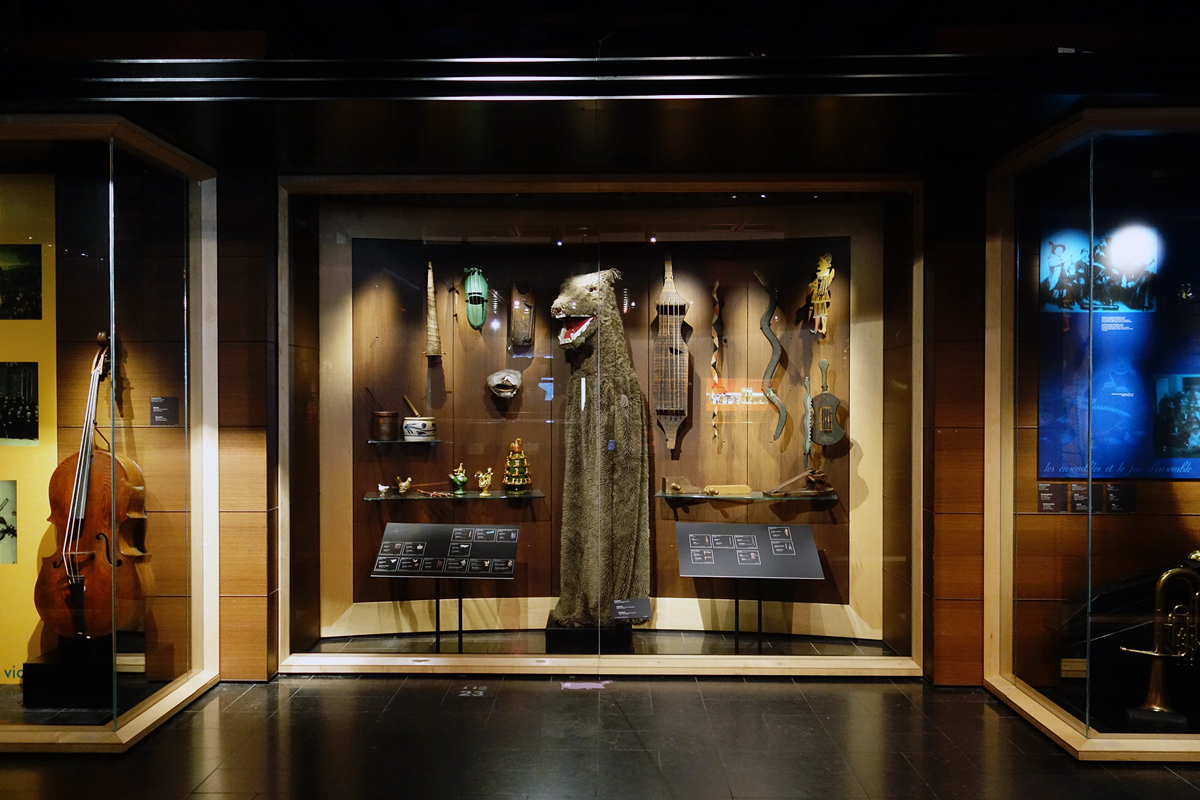CH Global Spin: Musical Instruments Museum, Brussels
Sight and sound are of equal importance when visiting this fantastic trove of melodious artifacts

by Karen Day
Do you know what a serpent chandelier sounds like? Or, perhaps more importantly, did you know that a serpent chandelier is a tuba-esque wind instrument? It’s surprising encounters like these that make exploring Brussels’ Musical Instruments Museum such a wondrous affair, but it’s the institution’s dense audio guide that makes it an incredibly well-rounded experience.

At five stories tall and home to over 8,000 instruments, there’s a tremendous amount to see. Upon entering the first of the two buildings MIM encompasses (the entrance is in the former Old England department store—an Art Nouveau gem designed in 1899 by Paul Saintenoy—while the back half is in Gilles-Barnabé Guimard’s 1774 Neo-Classical structure), visitors are handed a pair of headphones and a digital docent to accompany them on a self-directed tour. Unlike other museums where the audio guide is a supplemental asset, here it’s the key to unlocking professionally recorded examples of thousands of musical instruments.

MIM is such a globally important archive: there are pieces from all over the world representing each of the five families of instruments: idiophones, aerophones, chordophones, membranophones and electrophones. Some are of historical significance, like the shoulder harp, which originated during the reign of Thutmose III circa 1500 BC, or valve-master Adolphe Sax’s alto saxophone, which the Belgian patented in 1846. (MIM also houses Sax’s trombone with six independent valves and seven bells.) Or the glass harmonica, developed by Benjamin Franklin in 1762. Then there are instruments that demonstrate sheer imagination (including the aforementioned serpent), such as the Flemish knaptand, a dog costume in which the animal’s jaw acts as a musical clapper. Or the Norwegian hardingfele—a bewitching violin-like instrument from the 1800s—which is considered “incomplete” if not extravagantly decorated, and gave off a sound that was thought to evoke the spirits of fairies and trolls in the forest.

Many of the display cases on the first floor feature three to five related instruments, but there are also sections dedicated to numerous variations on one type, like 60 styles of bagpipes and 100 kinds of accordions, while other areas are devoted to the different instruments coming from one continent, like Asia. The surplus of examples are organized methodically by the museum, but for amateurs, might seem slightly arbitrary. That’s again where the audio guide keeps it interesting; instead of feeling overwhelmed by the volume of it all, visitors slowly meander through, listening to the sounds of instruments that visually pique their interest. This additional layer of information makes for a more enlivening sensory experience.
Take the glass elevator up to the second floor for an exhibition of devices influenced Western classical music, but make sure not to miss the basement level where there’s Dietrich Nikolaus Winkel’s noteworthy componium, a “masterpiece among mechanical instruments.” The ingenious 1821 invention not only reproduces music, but also composes it via two cylinders that play aleatoric variations on the theme first heard. The fourth floor contains an impressive display of harpsichords, pianos and keyboards, including the rare Geigenwerk (1625), which uses the uncommon combination of strings and keys to create sound. Today’s DJs will also appreciate this level, as it’s where to see a Big Briar theremin or check out the Ondes Martenot, which—developed in 1928—is one of the world’s oldest electronic musical instruments.

While MIM offers an unparalleled survey of musical artifacts, it also boasts a 360-degree view of Brussels from its rooftop restaurant. You can even keep your audio guide with you for extensive listens of all those antiquated deep cuts.
The Musical Instruments Museum is located at Rue Montagne de la Cour 2, 1000 Bruxelles, Belgium.
To celebrate their Round The World offering Star Alliance partnered with Marriott TRAVELER to offer Cool Hunting Editor-at-Large Karen Day her dream trip. She chose to explore locations she’d visit on a professional gap year, taking a break from the grind of NYC to explore places that inspire the creative spirit.
Images by Karen Day













